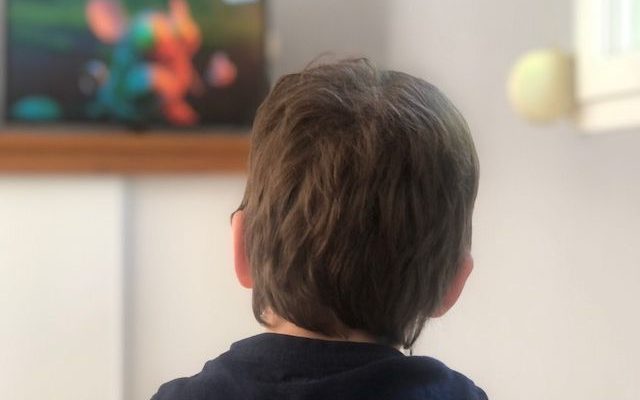Factory of cretins or trainer of citizens? One thing is certain, watching cartoons, when we are young, plays a role in the construction of personality. But to what extent can these images be beneficial? And what do children really learn by watching them? 20 minutes conducted the investigation.
School replaced by cartoons?
“The Anglo-Saxon countries are the champions for producing edutainment series for preschoolers, assures Pierre Siracusa, director of young public programs at France Télévisions. This is linked to the fact that, in these countries, nursery school does not exist. The cartoon, which therefore replaces the school, must allow the first learning and, in the first place, that of the relationship with others.
The British series Hey, wow wow, for example, falls within this scope. A dog, director of a leisure center, teaches children all kinds of life experiences, materialized by a badge. Thematic series like Patamusemade of modeling clay, learn how to make plasticine characters. We can cite a Catalan series, Jasmine and Jambo, which introduces you to music. In the same register of musical awakening, Okoo will soon unveil Luz and the sonidos (9 episodes of 5 minutes).
Similarly, learning to calculate finds a serious ally with number block, a series available on Netflix. Series dinosaur train tries, for its part, to make the little ones aware of writing and reading. And we could multiply the examples.
Imagination, fears, differences…
According to specialists and contrary to popular belief, cartoons have the ability to play a supporting role in the education of children by providing, for example, information about the world or by learning rules of behavior by Company. They can also help to enrich vocabulary. But the most important thing that a cartoon develops is the imagination.
“The child is thirsty to learn. He knows how to memorize scenes from cartoons and imitate the behavior of the characters they adore like real heroes”, comments Geneviève Djénati, psychotherapist and trainer for animation scriptwriters. A cartoon can thus help to overcome the fears that appear around the age of 4 or 5 years. The Crocochemar character who reigns over nightmares in the series Sat Sat plays this role perfectly, believes the psychiatrist.
Finally, series like Ernest and Celestine Or Masha and Michka offer the experience of difference as a backdrop. But they are not the only ones, far from it. “It is important to learn that the other is different, that all the characters are not the same. This is a characteristic of many cartoons”, according to Geneviève Djénati who considers that “children need different models to build themselves”.
Learn to collaborate
Similarly, the hero never intervenes alone. He needs others to succeed. It’s the theme of the series fireman samfor example, which inspired paw patrol, ninjago, PJ MasksTHE ace of the jungle or others Octonauts.
This necessary collaboration is also highlighted by the psychiatrist Serge Tisseron, specialist in childhood and the media. “The few animation series that I see offer totally adapted collaborative situations, he admits to 20 minutes. It is very important that the children discover the importance of collaborating to get out of a situation. »
According to Geneviève Djénati, a good series is also a series that teaches you to decide, to choose. “At 3 years old, they are in the crisis of opposition and learn frustration. It is very important that they see that we can make mistakes in order to finally find the right solution,” she explains.
Telling what he sees to control emotions
But to really learn, a child must know how to tell what he sees on the screen. “Cartoon images are the most emotionally charged,” says Serge Tisseron. It is rare to live in reality what we see on the screen. A cartoon is made to experience emotions, but the screen does not learn to control them. It is therefore necessary an adult to help the child to tell in order to help him to control this emotion”.
How ? “By inviting the child to tell what he sees and feels with simple questions so that he develops a critical distance, underlines the psychiatrist. This dialogue around a story he has just seen can help the child in his development. »
The first step in this development is therefore to tell what is seen on a screen. “It’s easier because it’s outside the child,” he says. It will also help him to tell what he sees around him in reality. This is the next step. Finally, the third and final step is for a child to be able to tell their own emotions. “Learning to develop a story about what a child has seen on TV will help him build a story about his personal emotions,” says Serge Tisseron.
What if it was the parents who learned?
Finally, there are, but more rarely, animated series that teach parents to behave differently with their children. This is the case, for example, of Bluey, an Australian series that tells the daily life of a family of sheepdogs.
“Often in cartoons, parents are the authority figure. The message is “listen to adults!”, says Claire Lefranc, production manager. Here it is the opposite. The cartoon takes the point of view of the child who tries to share his feelings with his parents. And it is the latter who listen and must adapt to situations. And to defuse complex situations, it is sometimes good to also receive this kind of advice.

